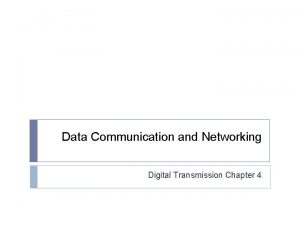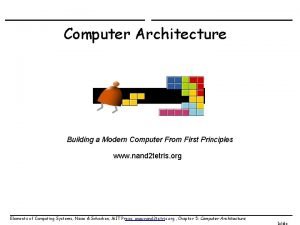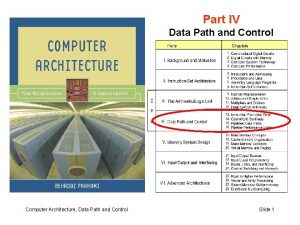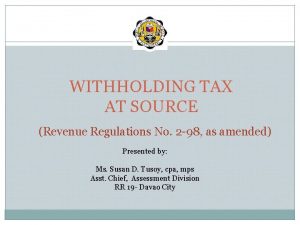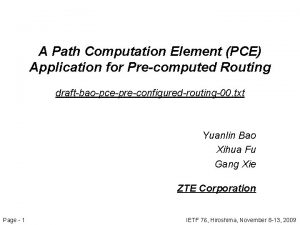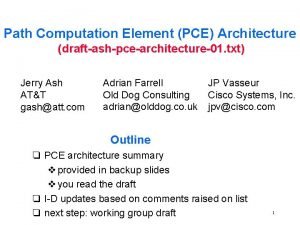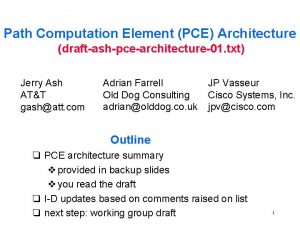The Application of the Path Computation Element Architecture






- Slides: 6

The Application of the Path Computation Element Architecture to the Determination of a Sequence of Domains in MPLS & GMPLS draft-king-pce-hierarchy-fwk-02. txt Daniel King, Old Dog Consulting Adrian Farrel, Old Dog Consulting 76 th IETF Hiroshima

Motivation • Using a PCE to compute a path between nodes within a single domain is relatively straightforward • Using a PCE to compute paths across multiple domains requires an additional technique • This document examines techniques to: – Establish the optimum path when the sequence of domains is not known in advance, whilst providing: • Path Diversity • Domain diversity, allowing the selection of paths that share ingress and egress domains, but do not share transit domains • Domain path selection should provide the capability to include or exclude specific border nodes • Utilize typical traffic engineering constraints (hop count, bandwidth, lambda continuity, path cost, etc. ) 76 th IETF Hiroshima

Hierarchical PCE (recap) • The Parent PCE maintains a topology map – The nodes are the Child domains – The map contains the inter-domain links – The TE capabilities of the links are also known • Parent PCE knows the identify and location of the child PCEs responsible for the Child domains – Statically configured • Domain confidentiality – A Parent PCE is aware of the topology and connections between domains, but is not aware of the contents of the domains – Child domains are completely confidential • One child cannot know the topology of another Child. • Child domains do not know the general domain mesh connectivity 76 th IETF Hiroshima

Applicability • Inter-domain Path Computation – When the Domain Path is Not Known • ASON architecture (G-7715 -2) – H-PCE mechanism fits well within the ASON routing architecture • Multiple Routing Areas • Multi-level • IGP Areas – Path computation across multi-area networks consisting of a backbone area and various peripheral areas • P 2 MP and Inter-layer – For future study. • All applications will require further study and the document will be updated accordingly

Manageability • Control of Function and Policy – Parent PCE – Child PCE – Policy Control • Need to manage authorization between Parent and Child PCEs – Information and Data Models • Monitoring of parent/child relationships, the use of PCEP between the parent and child – Verifying Correct Operation • Number of Child PCE requests • Number of successful hierarchical PCE procedures completions on a per-PCE-peer basis • Number of hierarchical PCE procedure completion failures on a per- PCE-peer basis • Number of hierarchical PCE procedure requests from unauthorized Child PCEs

Summary & Next Steps • Good feedback from IETF 75 and OIF Lannion (October) • The authors intend this work to be scoped within the current charter. – The initial will focus on the application of this model within a small group of domains – The authors believe that this work is now stable • We would like to move the work into the working group 76 th IETF Hiroshima

